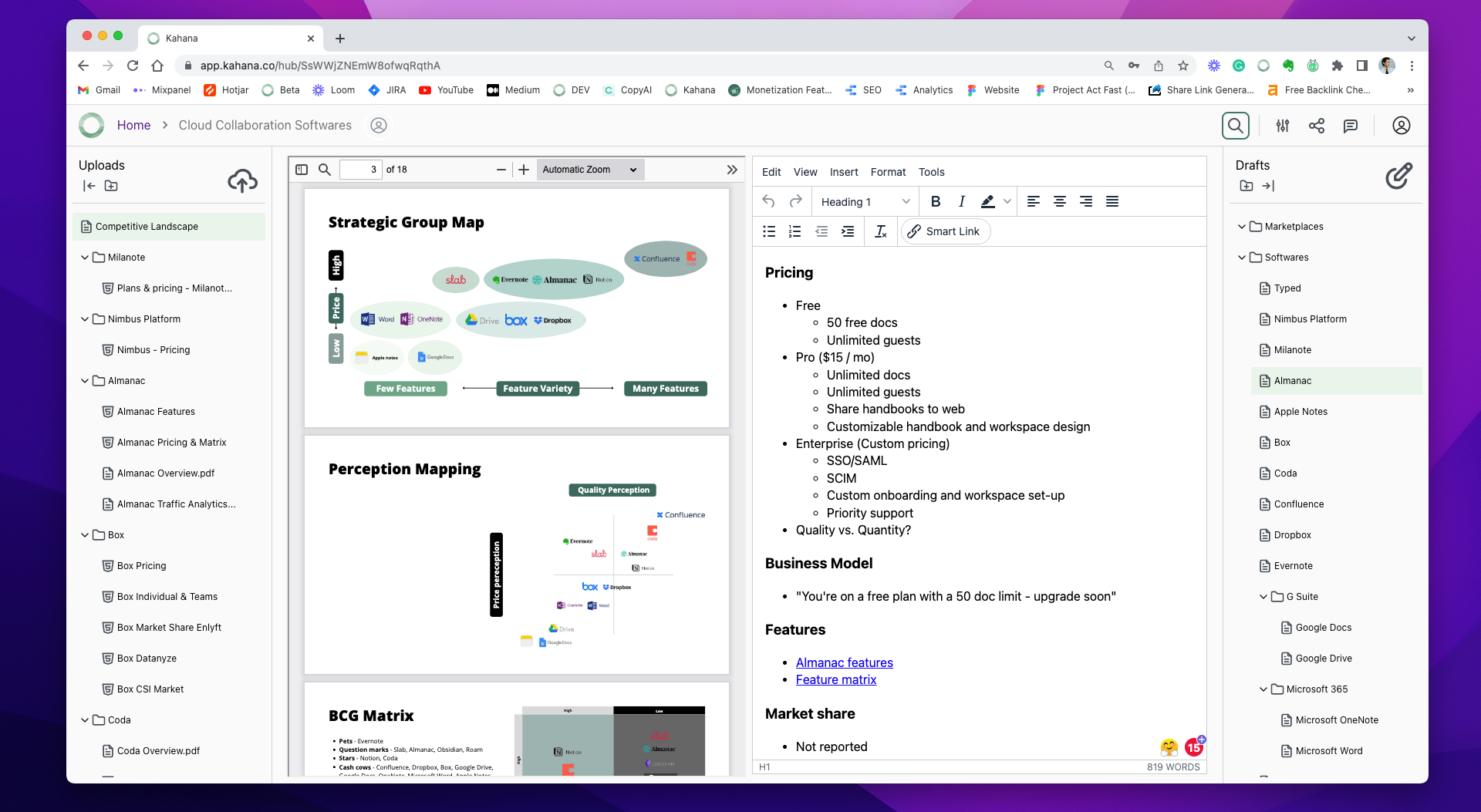Segmentation Research: Process, Tools, & Examples [template]

Topics covered ✅
- Segmentation Basics
- Company Service Advantages
- Segmentation Types
- Product Marketing
- Creating Segments
- Market Segmentation Approach
- Target Market Research
- Target Market Types
- Geographic Segmentation
- Target Audience
Segmentation research is one of the first steps in your marketing strategy. It helps you understand your customers and their needs more clearly. As a result, it allows you to create relevant messages that speak directly to them.

Claim My Free Segmentation Research Template
This hub is ready-made and comes pre-populated with free tools, examples, and files to help you improve your segmentation research.
1. Segmentation Basics
Segmentation is the process by which you divide a market into different groups based on certain characteristics.
These characteristics can be demographic (age, gender), psychographic (interests), or behavioral (brand loyalty).
The goal of segmentation is to find groups who will be interested in your products or services and then target these groups with specific marketing messages.
It also helps companies make more money by allowing them to focus their marketing efforts on the people most likely to buy their products.
By targeting only certain types of customers, companies can spend less money on advertising and more money making sure that their product works for them.
Segmentation research takes segmentation one step further, allowing you to tailor your marketing efforts to appeal to specific groups of customers.
2. Company Service Advantages
Segmentation is a vital process for many companies because it helps marketers identify target markets for their products or services, properly use audience research tools, determine which customers they should focus on, and how to best serve them.
3. Segmentation Types
There are two types of segmentation:
Demographic segmentation
This is the most common method of segmentation.
Demographic segmentation focuses on characteristics like age, gender, income level, education level, family size and composition (number of children), occupation or job type (salary levels), marital status (single or married), and geographic location (city or suburb).
Women between 35-50 years old with an annual income of $40K-$60K may be one demographically based customer segment for a company selling cosmetic products for women in this age group with that income range.
Psychographic segmentation
Psychographic segmentation focuses on personal interests and needs rather than demographics. This type of segmentation is used by companies to divide their customers into groups based on their:
- lifestyles
- behaviors
- attitudes
- spending habits
For example, if you're selling a new kind of metal detector, you would want to find out what hobbies people like in order to determine who might buy your product.
4. Product Marketing
Marketing is a vocation that requires a lot of creativity and thought. One of the most important things you can do to ensure your marketing campaigns are successful is to segment your market.
When you understand the needs of each segment and how they differ from each other, it's easier for you to do product testing market research, and create products and services that will appeal to them—and ultimately make more money.
5. Creating Segments
The first step in creating effective segments is deciding what type of information you want to use for your segmentation variables—the factors that will determine how many segments you'll have and what they'll look like.
Many segmentation algorithms are used to divide markets into different groups. For example, the clustering algorithm ensures that members within one group are very similar, while members of two separate groups are very dissimilar.
6. Market Segmentation Approach
The market segmentation process starts with defining the business problem or opportunity that needs to be addressed by market research.
This can be done through secondary research or primary research.
After identifying the business problem or opportunity, marketers need to analyze the current situation in order to identify potential solutions and establish project goals.
Marketers then need to decide what type of segmentation will best suit their needs – demographic or psychographic – before moving forward with the rest of the project planning process and conducting any necessary research activities required before implementing a new marketing strategy successfully!
Next, marketers will want to create profiles for each group so that everyone involved with the marketing plan knows how best to target each group individually without overlapping them (which could muddy up the message).
7. Target Market Research
If you can't tell what kind of person will buy your product or service, then how can you ever hope to sell it?
The answer is simple: market research!
This is how companies find out what their customers want so that they can give it to them (and make more money). By extension, it also helps with customer loyalty research.
It all starts with identifying different types of people who might be interested in what you're selling—which isn't always easy because people don't always fit neatly into categories like "men" or "women."
That's where market segmentation comes in handy!
8. Target Market Types
Common target markets for businesses include:
- For an upscale clothing boutique: Middle-aged people with a high income in comparison to the area's cost of living who often attend formal social events
- For a fast-food restaurant: Lower or middle-class adults who are traveling through the area and need a quick, cheap bite to eat
- For a photography studio: Families looking for portraits, couples who are getting married soon, seniors in high school or college who are looking for senior photos
9. Geographic Segmentation
The market segmentation process may include the use of customer segmentation.
Customer segments are important because they help the organization to understand its customers better and increase sales.
Geographic segmentation is a strategy that targets the products and services of people who live in or shop at a particular location.
It works based on the assumption that people in that location have similar needs, wants, and cultural considerations.
Brands can use their understanding of a particular area's interest to target more relevant marketing messages and suitable products to the potential customers who live there.
The benefits of geographic segmentation are:
- Relevancy - Targeted marketing campaigns within a geographic location will be relevant to the customers who live there and influence purchases.
- Saving money - Your marketing budget is more efficient when it offers products and services to people who really need them. It prevents you from wasting money on promoting things that nobody in the designated area needs. Geographic segmentation is often cheaper than psychographic, demographic or behavioral segmentation.
- Ease: Location information is easy to figure out and analyze.
10. Target Audience
Segmentation can be done using both quantitative and qualitative methods.
Quantitative methods include different types of surveys for research, while qualitative methods include focus groups or interviews.
These market research methods help identify different segments within a target audience based on their characteristics, such as age groupings or geographic location within the country where they reside or work.
This data can then be used by marketers so they know how best to reach out to these groups through various communication channels, such as print ads in newspapers/magazines; and digital ads on social media sites (like Facebook and Twitter).
Conclusion
As you can see from our overview, the segmentation of a market is a crucial part of any business. It not only helps you find the best customers and target them effectively but helps you create the right product to fit consumers' needs.

Talk with a Kahana representative
Fill out your information and a Kahana team representative will reach out to you. Have a simple question? Search our library of articles
